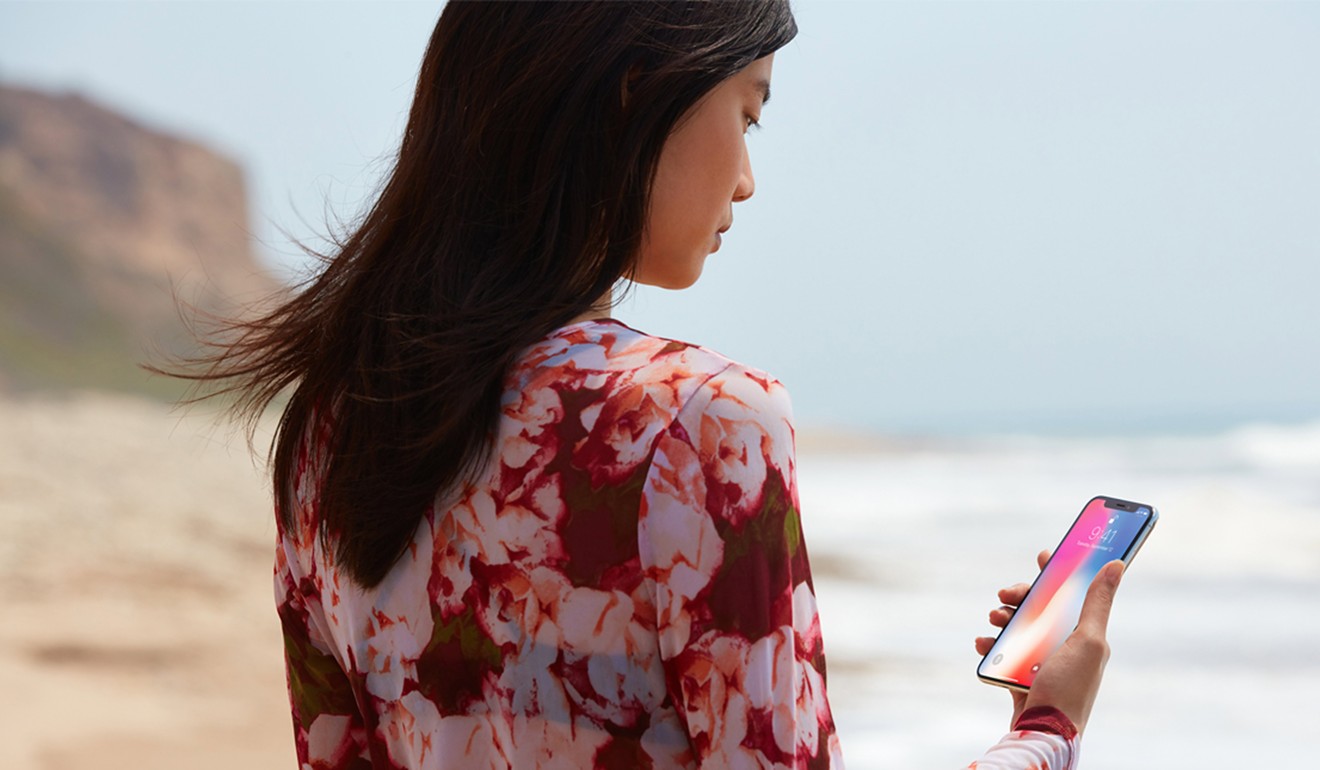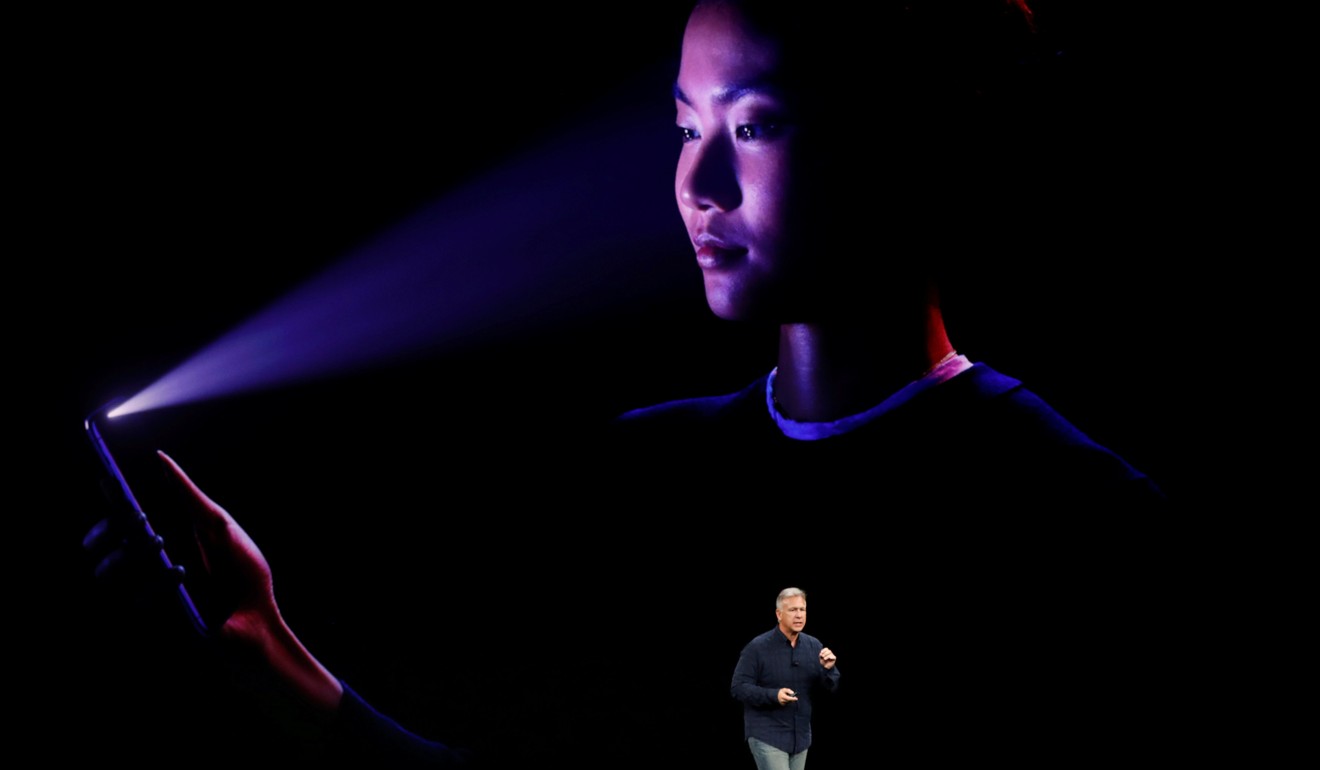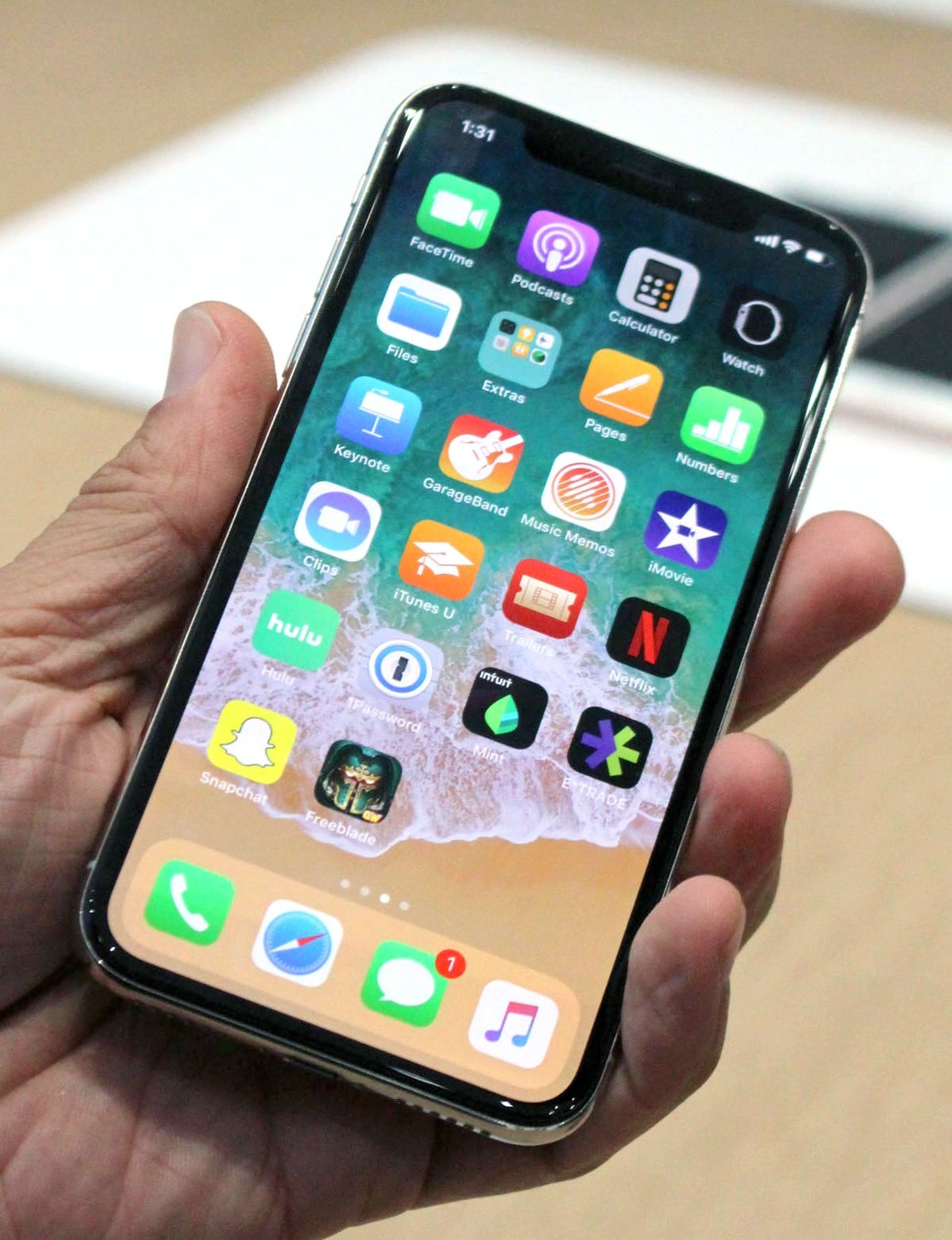
Face ID on iPhone X: is it a privacy problem or are you OK with facial recognition?
Shoppers outside an LA Apple store last week were overwhelming squeamish about facial recognition, but like fingerprint recognition, it could just be as Steve Jobs said: people don’t know what they want until you show it to them
Your passcode can be hacked, but your face is yours and yours alone. That is the thinking behind Apple’s latest security measure, which is more hi-tech and a bit more intimate than most other things on the market.
With Face ID, which Apple unveiled on Tuesday, owners of the company’s new top-of-the-line iPhone X will be able to unlock their phone, pay for products and use mobile apps just by glancing at their device.
Why the iPhone X feels like an evolution of the iPhone, but not of the smartphone
Biometric technology – which includes identification systems using face, fingerprint, iris and retina recognition – has been a hotbed of research this decade. With Apple’s backing, the field just got its most high-profile boost yet and could soon become the industry standard, even if many consumers aren’t quite comfortable with the concept.

Technologists tout a futuristic experience that is more secure than entering a passcode. They predict the technology could one day be used to unlock cars, withdraw money from ATMs or enter connected homes.
“You can share your password. You can share your car keys. But you can’t share your biometrics,” says George Avetisov, chief executive of biometric security firm Hypr.
With Touch ID, Apple’s fingerprint technology, the chance that a random person could unlock your phone with his or her fingerprint is one in 50,000, Apple says. With Face ID, it is one in one million.
Both systems store biometric data locally on the device rather than on a centralised server that could be targeted by hackers. That makes biometrics attractive from a privacy and security standpoint, Avetisov says.

Facial recognition technology has slowly crept into everyday life, most notably with personal photos. Upload a picture to Facebook, and the social media giant suggests friends to tag. Google and Apple can automatically identify faces in photos, making it easier for users to search their photos for a specific friend or relative.
It feels like privacy is getting scarce … I don’t want my phone recognising me that way
But Face ID takes facial recognition a step further. It works by relying on an advanced suite of tech – including an infrared camera, flood illuminator, front camera, dot projector, proximity sensor and ambient light sensor – packed into the front of the new iPhone X, which starts at US$1,000.
To set it up, you hold your iPhone X in front of your face and move your head around slowly. That becomes the stored version on your phone.
To use it, glance at the front-facing camera. The dot projector beams out more than 30,000 invisible infrared dots, and the infrared camera captures an image.

Apple uses the infrared image and dot pattern and pushes them through neural networks – a kind of machine learning model – to create a mathematical model of your face, and then checks that model against the stored image captured during the set-up phase. Once it detects a match, the phone unlocks. Face ID will also work with Apple Pay and third-party apps.
Face ID is sophisticated enough to work in the dark, and to learn your face under different circumstances – so go ahead and wear those funky glasses or grow that hipster beard.

Phil Schiller, senior vice-president of worldwide marketing at Apple, said the company has also worked hard to ensure the technology “can’t be easily spoofed”. Photographs won’t fool it, and Apple even worked with professional mask makers and make-up artists in Hollywood to protect against attempts to beat Face ID, he said.
Xiaomi launches its ‘iPhone 8 killer’ a day before Apple releases its much-anticipated model
Despite major advancements in the biometrics field, shoppers outside a Los Angeles Apple store last week overwhelmingly said they were squeamish about the idea of facial recognition.
“It feels like privacy is getting scarce,” said Byron Miranda, an audiovisuals integrator from Los Angeles who was shopping with his family. “There comes a point where you go too far. I don’t want my phone recognising me that way.”

But just as users were quick to come around to Touch ID, the same is likely to happen with Face ID. Time and again, Apple has pushed through innovations and made them widespread while turning others obsolete. As Steve Jobs famously said, “A lot of times, people don’t know what they want until you show it to them.”
New iPhone isn’t even out yet, but cases already hitting China market
Deepak Dutt, chief executive of mobile security firm Zighra, credited Apple’s introduction of Touch ID in 2013 with bringing biometrics more into the consumer consciousness.
“Now we’re just seeing the next wave and next generation,” he said. “Apple has a way of creating markets.”

